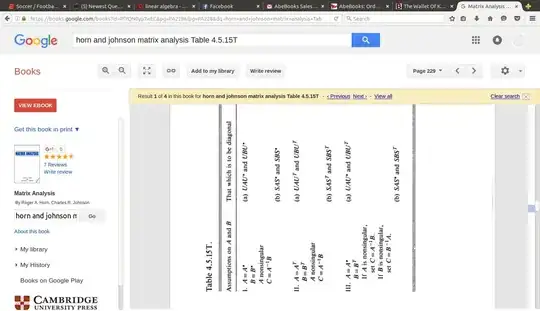Consider two symmetric positive-definite real matrices $A,B$. $A$ is hence invertible. Denote by $P$ the matrix of the column-eigenvectors of $A^{-1}B$ such that $P^{-1}A^{-1}BP=D$ where $D$ is a diagonal matrix of the eigenvalues of $A^{-1}B$.
$A^{-1}B$ is symmetric and real, hence can be diagonalized in an orthogonal basis, but this does not mean that $P$ is necessarily orthogonal.
It seems that $P^\top A P$ and $P^\top B P$ are diagonal. Is it always true, and if so, why?
What is not clear to me is the meaning of $P^\top$ instead of $P^{-1}$. I wonder whether this is related to a change of basis (for example, the change of basis of the bilinear forms defined by $A$ and $B$).
Edit I think this is true only if $A^{-1}B$ has distinct eigenvalues. Indeed, let $v_i$ denote an eigenvector of $A^{-1}B$ for $\lambda_i>0$ (because it is PD), then $A^{-1}B v_i=\lambda_i v_i$ or $Bv_i=\lambda A v_i$ so that $v_j^\top B v_i=\lambda_i v_j^\top A v_i$ and similarly $v_i^\top B v_j=\lambda_j v_i^\top A v_j$. Substracting one equality to the other: $$ (\lambda_j-\lambda_i)v_i^\top A v_j=(\lambda_j-\lambda_i)v_i^\top \dfrac{1}{\lambda_j} B v_j.$$ Hence, if $\lambda_i\neq\lambda_j$, necessarily $v_i^\top A v_j=v_i^\top B v_j=0$ or $V^\top A V$ and $V^\top B V$ are diagonal, where $V$ is a matrix of columns the $v_i$. Does it seem correct?


